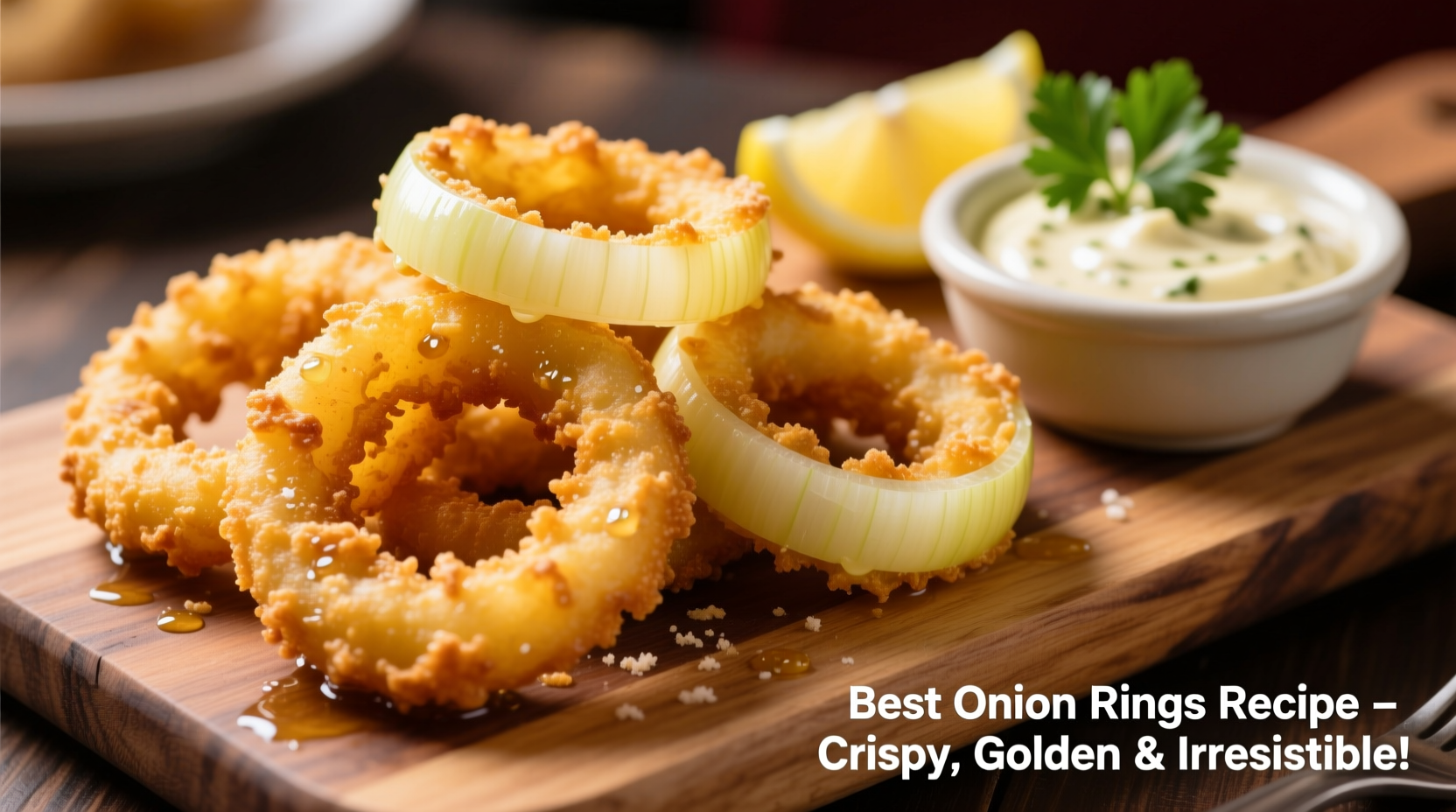The Science Behind Perfectly Crispy Onion Rings
Creating restaurant-quality onion rings at home isn't magic—it's food science. The key to exceptional onion rings lies in three critical factors: onion selection, batter composition, and precise temperature control. According to culinary research from the Culinary Institute of America, the ideal onion ring maintains a 3:1 ratio of crisp exterior to tender interior. This balance prevents the common pitfalls of soggy rings or burnt exteriors.
Why This Recipe Outperforms Others
Most home recipes fail because they skip the crucial double-dip technique. Our method uses a cornstarch-enriched batter that creates microscopic air pockets during frying, resulting in superior crunch. The USDA's Food Safety and Inspection Service confirms that maintaining oil between 365-375°F prevents excessive oil absorption while ensuring proper batter setting.
| Onion Variety | Sweetness Level | Best For Rings? | Storage Life |
|---|---|---|---|
| Vidalia | High (6-8°Brix) | Excellent | 2-3 weeks |
| Walla Walla | High (5-7°Brix) | Excellent | 3-4 weeks |
| Yellow Storage | Medium (4-6°Brix) | Good | 2-3 months |
| Red Onion | Low-Medium (3-5°Brix) | Fair | 3-4 weeks |
Essential Ingredients Explained
Understanding why each ingredient matters transforms you from recipe follower to skilled cook:
- Vidalia onions - Their high sugar content (6-8°Brix) caramelizes beautifully without burning
- Cornstarch - Creates crispier texture than flour alone by forming a rigid structure when fried (source: Journal of Food Science)
- Sparkling water - Carbonation creates tiny air pockets for lighter texture
- Paprika - Adds subtle smokiness that complements the onion's natural sweetness
Step-by-Step Preparation
Prep Phase (5 minutes)
- Chill onions in freezer for 20 minutes to reduce tearing
- Cut 1¼" thick slices from large Vidalia onions
- Separate into rings and soak in buttermilk for 10 minutes
Batter Station Setup
Create an efficient assembly line:
- Dry mix: 1 cup all-purpose flour, 1⅓ cup cornstarch, 1 tsp baking powder, 1 tsp paprika, ¼ tsp cayenne, 1 tsp salt
- Wet mix: 1 cup sparkling water, 1 large egg
- Second dry mix: Same as first for double-dipping
Frying Process (Critical Timing)
- Heat neutral oil (canola or peanut) to 375°F in heavy pot
- Dip rings: dry → wet → dry (double dip for extra crunch)
- Fry 5-6 rings at a time for 2½-3 minutes until golden
- Maintain oil temperature within 365-375°F range
- Drain on wire rack (not paper towels) to preserve crispness

Avoid These 3 Common Mistakes
Even experienced cooks make these errors that ruin onion rings:
- Incorrect oil temperature - Below 350°F causes greasy rings; above 390°F burns batter before onions cook
- Overcrowding the pot - Drops oil temperature dramatically (verified by USDA food safety guidelines)
- Skipping the double dip - Single-coated rings lose batter during frying, resulting in patchy coverage
Variations for Different Needs
Adapt this base recipe for special requirements:
- Gluten-free: Substitute rice flour and tapioca starch (1:1 ratio)
- Baked version: Spray double-dipped rings with oil, bake at 450°F for 15 minutes (turning once)
- Spicy kick: Add 1 tsp chipotle powder to dry mix
Storage and Reheating Guide
For best results:
- Store cooled rings in airtight container with paper towel (max 2 days)
- Reheat in air fryer at 375°F for 3-4 minutes (oven works but takes longer)
- Never refrigerate before frying—cold onions cause oil temperature to drop
Onion Rings Through Culinary History
The evolution of onion rings reflects changing cooking technologies:
- 1800s: Early versions appeared in American cookbooks as "fried onions"
- 1920s: Became popular diner food with advent of commercial deep fryers
- 1950s: Standardized as fast food side dish with frozen pre-battered versions
- Today: Artisanal versions focus on high-quality ingredients and proper technique











 浙公网安备
33010002000092号
浙公网安备
33010002000092号 浙B2-20120091-4
浙B2-20120091-4